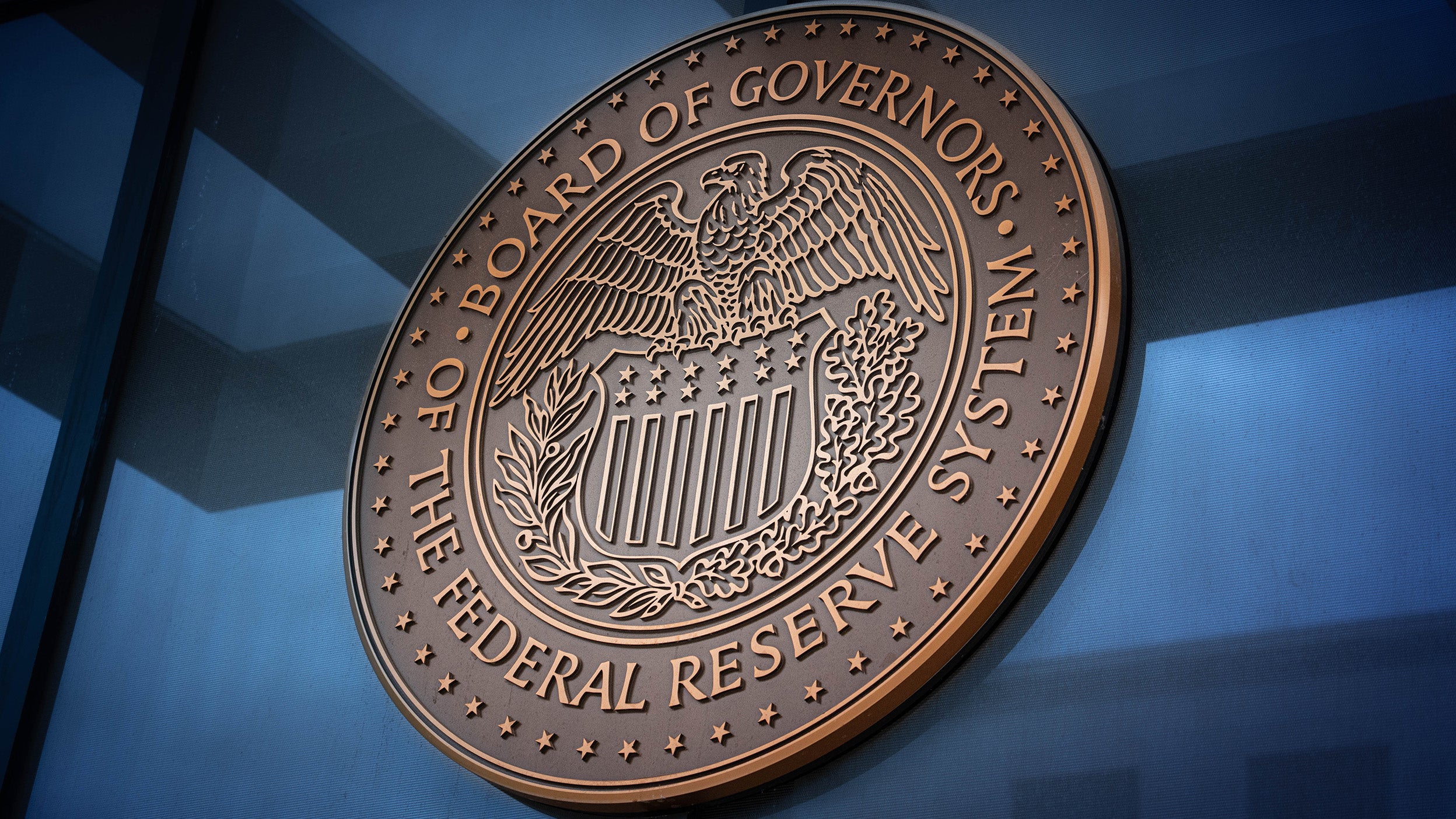
Markets and Economy Above the Noise: Rethinking 2025 narratives
In 2025, clear storylines on the Federal Reserve, AI stocks, and rates captivated us. But the numbers don’t always match the narratives.

Will Fed Chair Jerome Powell signal a change in US monetary policy tack at the Jackson Hole Symposium?
Markets received a mixed set of messages from UK data, but on balance the economy appears better than expected.
Corporate earnings are expected to grow faster, which may support further stock gains.
Investors may justifiably feel whipsawed by conflicting economic data. Earlier this month, the initial strength in US payrolls was significantly revised downward. Last week, US consumer inflation met expectations, only to be followed by a hotter-than-expected producer price report just two days later and then an upward revision to retail sales data on Friday. These apparent inconsistencies reflect a US economy that is reorienting itself in a new environment shaped by tariffs and less labor supply — which, as we’ve noted before, tend to come with a cost of slower growth and rising prices.
Importantly, the recent uptick in US prices is more likely to be interpreted by markets as an isolated shock rather than the onset of broad-based inflation. We’re watching inflation expectations closely. After the Producer Price Index (PPI) release, the 3-year breakeven inflation rate rose by two basis points but remains only slightly above 2.5%,1 a reassuring sign that long-term inflation expectations remain anchored.
The good news is that the global economy continues to show resilience. On balance, we interpret the current environment as one of remarkable economic and corporate resilience in the face of the changing global trade backdrop. Global companies, in aggregate, are showing themselves to be well positioned to cope with the current backdrop. Many are thriving and analysts are upgrading their earnings growth forecasts. This sets up the conditions for further strong performance in risk assets in 2025.
The Fed will meet this week for their annual Jackson Hole Economic Policy Symposium. This year’s theme is “Labor Markets in Transition: Demographics, Productivity, and Macroeconomic Policy.“ As always, a very apt set of topics to be discussed. But the main focus for markets will be Fed Chair Jerome Powell’s comments. Historically, this meeting has been used to signal policy shifts. For example, last year Powell said that the “time has come for policy to adjust”2 — 100 basis points of cuts followed in the rest of 2024.
President Trump and US Treasury Secretary Scott Bessant are calling for a repeat of last year. While the market is currently fully pricing a 25-basis point rate cut in September, we would urge market participants to be mindful that the incoming data has been very mixed. Contrary to Bessant’s suggestion that “any model”3 suggests rates should be around 150 basis points lower than they are now, most models, such as the Taylor Rule, suggest base rates are about right. Some specifications suggest rates should be higher.
While much of the commentary around last week’s Consumer Price Index (CPI) data emphasized the moderate passthrough from tariffs, it was the supercore services CPI figure — which excludes food, energy, and housing costs — that caught our eye. At 0.48% month-over-month,4 it was the highest reading since January and suggests that inflationary pressures are elevated in areas that the Fed would have trouble passing off as “one-off tariff effects.” Friday’s PPI services data confirmed that concern; it rose by 1.1% month-over-month.5
July retail sales data for the US, released Friday, showed a solid 0.5% month-over-month increase, while June’s figure was revised to 0.9% from 0.6%. This data confirms comments from banks and payment providers6 during the second-quarter earnings season that the US consumer still appears happy to spend.
Recent labor market data meant the case for the Fed putting in some insurance cuts is a valid and compelling one, but the latest inflation data provided reasons to think Powell will reaffirm the Federal Open Market Committee’s biases to wait for more clarity in the data.
UK gross domestic product (GDP) and labor market data released last week sent some mixed signals too, but on balance point to an economy that’s in a better place than many feared. According to data from the Office of National Statistics, the UK economy grew by 0.3% in the second quarter, or 1.4% year-over-year, as of August 14, 2025. Net exports were a large contributor to growth in the first quarter as US demand for UK exports rose ahead of tariffs. While we might have expected some drag in the second quarter, net exports remained a small net positive contributor to growth.
Official labor market data showed fewer workers again in July, but the pace of contraction in the labor market slowed. Companies have slowed their hiring significantly in response to the national insurance increase earlier this year, but so far are not laying off people to any great degree.
Mortgage rates are falling and are nearing the point where the balance of refinancing should no longer squeeze most households. UK households still have plenty of savings and therefore may be expected to increase their spending later this year.
In sum, the UK economy has likely hit its lowest point and could show further improvement through the remainder of the year, in our view.
Second-quarter earnings season is nearing its end, and many companies have beaten consensus growth forecasts. They’re now being rewarded by analysts with upward revisions to their future growth forecasts. US companies, especially in the financials and tech sectors, are seeing the bulk of the earnings upgrades. Earnings expectations for energy companies, however, have been revised lower because of lower oil prices. Call us old fashioned, but it’s our opinion that it’s earnings that ultimately drive stock markets. If those forecasts are being revised in the right direction, we expect that will lend support for further stock market gains this year.
Date |
Country |
Economic release or event |
Importance |
|---|---|---|---|
Aug. 19 |
Canada |
Consumer Price Index (CPI) |
Indicates inflation trends and influences Bank of Canada interest rate decisions |
Aug. 20 |
China |
People's Bank of China Interest Rate Decision |
Impacts Asia monetary policy and financial market volatility
|
|
New Zealand |
Reserve Bank of New Zealand interest rate decision |
Signals monetary policy direction and affects New Zealand dollar value
|
|
UK |
Consumer Price Index (CPI)
|
Measures inflation and affects Bank of England policy decisions. |
|
US |
Federal Reserve Meeting Minutes (July) |
Provides insights into Fed’s policy stance and future rate changes
|
Aug. 21–22 |
US |
Jackson Hole Economic Policy Symposium |
Key central bank event where Fed Chair discusses monetary policy outlook |
Aug. 21 |
Germany, eurozone, UK, US |
Preliminary Purchasing Managers’ Indexes (PMI) |
Early indicators of economic health in manufacturing and services sectors
|
Aug. 22 |
UK |
Retail sales |
Reflects consumer spending trends and economic momentum
|

In 2025, clear storylines on the Federal Reserve, AI stocks, and rates captivated us. But the numbers don’t always match the narratives.

For investors looking to diversify their mega-cap technology exposure, improving growth and falling interest rates may be good reasons.

A rate cut, which markets are pricing in despite Fed member differences, and an expected improving economy in 2026, could support stocks.
Important information
NA4748824
Image: d3sign/Getty Images
All investing involves risk, including the risk of loss.
Past performance does not guarantee future results.
Investments cannot be made directly in an index.
This does not constitute a recommendation of any investment strategy or product for a particular investor. Investors should consult a financial professional before making any investment decisions.
A basis point is one-hundredth of a percentage point.
Breakeven inflation is the difference in yield between a nominal Treasury security and a Treasury Inflation-Protected Security of the same maturity.
Breakeven inflation is the difference in yield between a nominal Treasury security and a Treasury Inflation-Protected Security of the same maturity.
The Federal Open Market Committee (FOMC) is a committee of the Federal Reserve Board that meets regularly to set monetary policy, including the interest rates that are charged to banks.
Gross domestic product (GDP) is a broad indicator of a region’s economic activity, measuring the monetary value of all the finished goods and services produced in that region over a specified time period.
Inflation is the rate at which the general price level for goods and services is increasing.
Many products and services offered in technology-related industries are subject to rapid obsolescence, which may lower the value of the issuers.
Monetary easing refers to the lowering of interest rates and deposit ratios by central banks.
The Producer Price Index (PPI) program measures the average change over time in the selling prices received by domestic producers for their output. The prices included in the PPI are from the first commercial transaction for many products and some services.
The profitability of businesses in the financial services sector depends on the availability and cost of money and may fluctuate significantly in response to changes in government regulation, interest rates, and general economic conditions. These businesses often operate with substantial financial leverage.
Purchasing Managers’ Indexes (PMI) are based on monthly surveys of companies worldwide and gauge business conditions within the manufacturing and services sectors.
A risk asset is generally described as any financial security or instrument that carries risk and is likely to fluctuate in price.
The Taylor rule estimates the equilibrium level for the federal funds rate.
The risks of investing in securities of foreign issuers, including emerging market issuers, can include fluctuations in foreign currencies, political and economic instability, and foreign taxation issues.
In general, stock values fluctuate, sometimes widely, in response to activities specific to the company as well as general market, economic and political conditions.
The opinions referenced above are those of the author as of Aug. 18, 2025. These comments should not be construed as recommendations, but as an illustration of broader themes. Forward-looking statements are not guarantees of future results. They involve risks, uncertainties, and assumptions; there can be no assurance that actual results will not differ materially from expectations.
This link takes you to a site not affiliated with Invesco. The site is for informational purposes only. Invesco does not guarantee nor take any responsibility for any of the content.